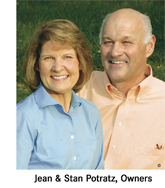Message from the Owner
The US Sheep Industry
|
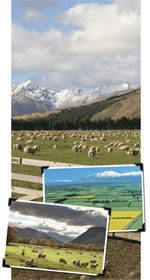 |
Come join us!
New Zealand Sheep Tour
November 9 - 20, 2008
$3800 per person (excludes international airfare)
Journey with Premier through beautiful New Zealand with up to 40 sheep producers. You'll find that getting to know them is an unexpected "take-home" benefit. High among Premier's purposes for our trips is the long-term enhancement and unification of the US sheep industry.
The trip will include:
The Royal New Zealand Show
It's New Zealand's largest sheep exhibition and largest agricultural event with livestock shows, displays and 200 trade
show stands. 115,000 visitors. www.theshow.co.nz
Sheep stops
- 1250 acre property with 2000 Finn/Coopworth/Texel ewes and 3000 finishing lambs
- 4000 ewe trust station
- 7000 ewe Border Leicester/Merino property
- 94,000 acre high country station that stocks 45,000 Merino/Romney ewes as well as 4500 Hereford cattle
- Lincoln University Pastoral Research Farm
Other stops and opportunities
- Kelly Tarlton's Underwater World
- Thermal area in Rotorua (exceeded in size only by Yellowstone)
- Maori concert and feast
- Commercial trout farm
- New Zealand farm store (compare Kiwi farmer choices with our own in the US)
- "Take in" world-famous Queenstown in the Southern Alps for 2 nights and a day. Visit an old gold mining town as well as the famous bungee-jump river and bridge. You can take a scenic flight to the famous Milford Sound or experience a jet-boat ride on the Shotover River.
- Exploring the cultural richness surrounding Mt Somers and Dunedin�
We begin Nov. 9, 2008, in Auckland on the North Island and finish in Christchurch on the South Island on Nov. 20. The cost: $3800 per person excluding international airfare. Assumes 2 persons/room. Includes most meals.
LUCKY DRAWING–We'll place in a hat the names of those who join us on this excursion. When we arrive in New Zealand, we'll draw a name. That person will have 50% ($1900) of the tour's cost refunded on the spot.
We invite you to join Premier for our tour of New Zealand. Savor world-renowned scenery. Observe "up close and personal" different approaches to sheep production. Build lasting relationships with other sheep producers. Experience the trip of a lifetime!
(800) 282-6631 or e-mail at ssexton@premier1supplies.com
Sheep photos courtesy of www.wildernessphotography.com.
Canterbury Plains photo courtesy of Tourism New Zealand.
Special Price from Premier!
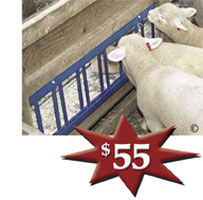 |
Creep Feeder Insert
Our metal frame Creep Feeder Insert makes it a "cinch" to get lambs to eat creep feed because lambs readily imitate their mothers eating just to the right or left of the insert.
The insert screws on and off our wood Walk-Thru and Drive-By Feeders–allowing the feeder to also be used by adult sheep and goats. 42 in. long.
Item #937000 – $55 (reg. $66)
Note: When ordering from our website, enter News
29IT
in the "Catalog Source Code" box on the "Checkout-Confirm & Submit" screen or in the notes
field. The promo code on our website will not work for this. The original price will be shown on your website
order. We will adjust it to the sale price when received. www.premier1supplies.com
Offer good through 3-31-08, or while supplies last!
Premier VIP
Buying Terminal Sheep Sires
by Bob Kimm, Kimm Suffolks, Dysart, IA (319) 476-3875
Today the commercial sheep producers have limited sources to purchase sires which possess many of the traits they desperately need to add profit and ease of care to their business. Size and growth have been top priorities, and to a point they should continue to be high on the breeders' list. The show ring has placed great emphasis on size, for breeding sheep and the clean or modern look for the market lamb side of the equation. This has been a trend for well over three decades. It is impossible for any live evaluator, looking only at phenotype, to identify the many attributes that can make the daily task of raising sheep easier.
Only if the seedstock breeders, responsible for raising sires for the industry, are willing to accurately record and document production information, and then provide such information to prospective buyers, will progress be made. The beef, dairy and swine industries have embraced data in the form of EPDs (expected progeny differences) to promote the performance of their species. The use of this technology, however, has not found wide acceptance in the sheep industry. The program in place for sheep breeders is the National Sheep Improvement Program (NSIP), originated in the mid 1980s at Iowa State University. Its home now resides at Virginia Tech. Some maternal breeds which have found value using across-flock EPDs are Polypay, Tarhgee and Katahdin. This though has not been the case for most of the terminal sires. There are opponents of this program who feel the vast flock management differences by which animals are reared leave questions of doubt concerning the accuracy of this data, and of course breeder integrity comes into play. This may be true. However, it is a tool presently available for the sheep industry not fully being used.
The beef and swine industries have placed emphasis on the use of ultrasound technology to promote their sire's carcass merits. This is another tool that has been slow to receive wide use by the sheep industry. A big reason given by many would be that when selling lamb, only weight is considered. True, most producers do not receive incentives for carcass traits, especially for muscle. However, some are now being paid a premium for leanness (yield grade). It would only stand to reason if the packing industry has realized value in securing leaner lambs, then at some point they would add a premium for muscle. The trap we should not fall into on carcass traits is a lesson which can be taken from the swine world; you can get the product too lean! The beef producer's approach to rearing functional animals has been adopting the "Theory of Optimums". Meaning, anything in excess is not necessarily the best for all involved. The beef industry went through the size fade, currently popular with many of today's sheep breeds, only to find the bigger cattle were not as efficient to maintain (this has to be considered with today's rising feed costs); more grain (not roughage) was required; more reproduction problems surfaced; they were generally harder to handle; and the packing industry (consumer in the end) was not looking for 900 lb plus carcasses and the retail product which they represent. Why not gain from our red meat counterpart's mistakes and apply their lessons learned?
Most who purchase sires, no matter the species, are interested in structural soundness. Whatever the record format or information available to the buyer, the prospective sire must be able to move freely and maintain his soundness for years to come. There can be a "Pride of Ownership" as well, when these animals are viewed by their owners and occasional visitors to the flock, it is a perk to like the animal's overall appearance.
Many of today's sheep flocks exist because of the families' early interest to be competitive in the show ring. Not all rams produced fit the criteria to enjoy success in a show ring, so some end up as possible candidates for use in the commercial ram industry. This is where the commercial flocks need to be more selective and not settle for JUST a ram to breed their ewes because it is cheap! When purchasing the new flock sire, producers should require more. Fertility, growth data (be it from NSIP or the seedstock owners home flock records) and muscle need to be at the top of the list for most terminal sires purchased. The frame size required should be dictated by the current ewe flock's size. The question to ask is what is the weight and size lamb that the local market prefers to buy? However, there are so many additional traits which bring practical function to a sheep's overall performance. Convenience traits such as correct underpinning, disposition, fleshing ability, longevity, birth weight and lamb vigor should all be considered. If replacements are to be retained, then the list should be increased to include such things as mothering ability, teat size, udder shape and out of season breeding capabilities, to name a few.
From Premier
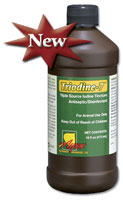 |
Triodine-7
Iodine 7% has long been used to disinfect and dry newborn navels.
But its ability to be made into illegal drugs required government intervention. Last summer the Feds imposed restrictions that left sheep and goat producers who lamb indoors with a serious problem.
Further research resulted in the creation of Triodine-7. It's a very similar product to Iodine 7%, but it cannot be used for illegal drugs.
Reports from shepherds who have tried it are good, so we can now recommend it. Premier will be using it for this spring's lamb and kid crop.
Item #556100 – pint $6.30
Premier Employee Spotlight
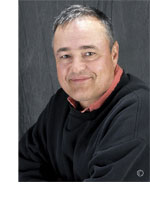 |
Tracy Swift
Tracy Swift, who lives in Washington, IA, says that what he likes best about his position as Premier's Facilities Manager is "the construction projects that occur".
In 2007 Premier built a new warehouse, which was full of operational challenges, and remodeled an existing warehouse to create additional office space and a graphics/photo studio work area.
So it's been a good thing for all the folks at Premier that Tracy says "the challenge of solving problems that happen in those types of projects is what makes my job interesting". He adds that he enjoys the work environment, and the people who work at Premier "are a great group of folks who are hard working, honest and very fun".
He has been keeping Premier's physical plant running smoothly for three years.
Tracy and his wife Teresa, married 22 years, have three children: Justin, 20, in college majoring in business administration; Jordan, 17; and Dalton, 15. Teresa works in the surgical department at Mercy Hospital in Iowa City.
Tracy is talented with a chain saw, and in his spare time he carves exceptional objects from pieces of wood. He has carved items from tall to small, including a ram's head bench for Premier, totem poles and buffalo.
His favorite line is "the grass is always greener on the other side-BUT you still have to mow it". Nice thought as we move towards spring!
Recipe
Jalapeno Lamb Chops
Ingredients:
1/2 lb pineapple chunks, chopped
3 Tbsps mint apple jelly
1 Tbsp jalapeno pepper, seeded and chopped (wear rubber gloves)
1/4 cup lemon juice
1 Tbsp prepared mustard
1/2 tsp ground cinnamon
4 lamb chops about 1/3 lb each
Turn on broiler. Combine first 5 ingredients in a heavy saucepan over medium-high heat. Bring to a boil, stirring frequently until jelly has melted. Set aside. Combine cinnamon, salt and pepper to taste in a bowl. Sprinkle cinnamon mixture over lamb chops. Place lambs chops on a broiling pan. Broil 4 inches from heat source 6 minutes. Turn and broil 2 minutes. Spoon sauce over lamb chops and broil another 5 minutes.


